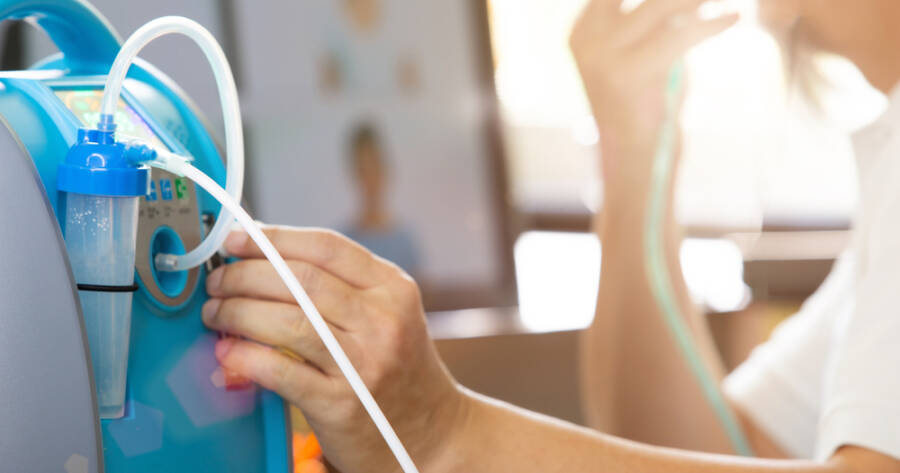Medicare Part B covers renting portable oxygen machines for seniors with conditions like COPD or emphysema. It includes equipment and related services, with some costs for beneficiaries. Eligibility, rental durations, and supplier responsibilities are specified, supporting continuous oxygen therapy and enhancing quality of life.
Eligibility Criteria for Portable Oxygen Coverage
Medicare Part B covers portable oxygen equipment and related supplies when specific conditions are met. Seniors must fulfill the following criteria as outlined by the Centers for Medicare & Medicaid Services (CMS):
Medical Diagnosis
- Must have a severe lung disease or a condition that restricts oxygen intake.
- Common qualifying conditions include chronic obstructive pulmonary disease (COPD), emphysema, and other significant pulmonary disorders.
Blood Oxygen Levels
- Determined through blood gas studies measuring oxygen saturation.
- Requires a partial pressure of oxygen of 55 mm Hg or lower, or an oxygen saturation of 88% or below.
- These levels must be present at rest, during exercise, or while sleeping.
Medical Prescription
- Must obtain a prescription from a healthcare provider.
- The prescription should specify the flow rate, frequency, and duration of oxygen use.
- Must indicate that portable oxygen is necessary for mobility and activities outside the home.
Meeting these eligibility criteria ensures that Medicare Part B supports portable oxygen rentals, enabling seniors to access necessary oxygen therapy both at home and while traveling.
Medicare Advantage Provides Comprehensive Coverage for Portable Oxygen Units
Medicare Advantage Plans, known as Part C, provide an alternative to Original Medicare coverage through private insurance companies approved by Medicare. These plans often include all services covered under Medicare Parts A and B, sometimes with additional benefits like vision and dental care. Some Medicare Advantage plans might also offer more comprehensive coverage for portable oxygen units, potentially including additional equipment and maintenance.
These plans could provide cost-saving benefits, but beneficiaries should carefully evaluate the specifics of each plan. Checking coverage limits, network restrictions, and potential co-pays or premiums is essential. Consulting with plan representatives and healthcare providers can help determine if Medicare Advantage aligns well with individual needs and circumstances, providing optimal oxygen therapy coverage.
Managing Costs with Supplemental Insurance
Supplemental insurance, or Medigap, offers a solution for covering remaining out-of-pocket expenses not addressed by Medicare Part B. Medigap policies are designed to bridge coverage gaps, assisting with co-payments, deductibles, and other healthcare-related costs. These plans can alleviate financial stress, ensuring affordable access to necessary medical equipment.
When considering supplemental plans, beneficiaries should assess available options and evaluate factors such as cost, benefits, and provider network compatibility. Working with insurance advisors or consulting with healthcare providers can guide seniors in choosing plans tailored to their specific requirements, optimizing both financial and health outcomes.
The Importance of Portable Oxygen Systems
Portable oxygen systems offer significant advantages by allowing users to maintain mobility and independence while managing their respiratory health. These systems are designed to be lightweight and user-friendly, facilitating easy transport and enabling participation in daily activities and social engagements. This mobility can enhance the quality of life and provide seniors with more autonomy.
Using oxygen therapy improves oxygen levels in the blood, potentially reducing symptoms like shortness of breath and fatigue. As a consequence, it may contribute to better overall physical health, energy levels, and mental well-being. Seniors empowered with the freedom to move comfortably are likely to experience improved social interaction and reduced isolation.
Practical Tips for Using Portable Oxygen Systems
For optimal benefit, seniors using portable oxygen should familiarize themselves with the device’s operation, maintenance, and safety protocols. Proper use ensures effective oxygen delivery and minimizes potential complications. Suppliers typically provide training and support to aid users in becoming comfortable with their equipment.
Incorporating portable oxygen into daily routines can enhance the ease of management. Establishing regular cleaning protocols, scheduling maintenance, and understanding battery or tank replenishment are integral to maintaining the system’s performance. Planning activities around system capabilities can also enhance users’ mobility and interaction with their environment comfortably and confidently.
Empowering Seniors with Oxygen Access
Securing portable oxygen rentals through Medicare Part B coverage provides seniors with essential resources for managing respiratory health effectively. By understanding the intricacies of Medicare coverage, exploring Medicare Advantage plans, and considering supplemental insurance, seniors can ensure comprehensive care.
Empowered with the right equipment and knowledge, those reliant on oxygen therapy can enjoy enhanced mobility and quality of life. By taking proactive steps in accessing and managing oxygen units, seniors can achieve better health outcomes and maintain their independence and well-being.

